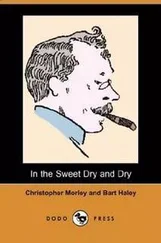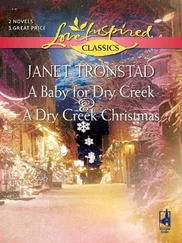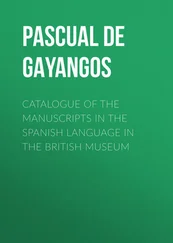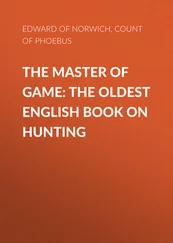2.4.4 Dry-Point Glossing in Old IrishOld Irish dry-point glosses
Dry-point glossing in OIr is reported from several MSS, but to date no comprehensive overview of the extent or status of dry-point glossing in Celtic literacy is available and a direct connection between Celtic and OE dry-point glossing practices cannot be discerned. Ó Cróinín (1999: 94) edits dry-point glosses from Paris, Bibliothèque nationale lat. 9382Paris, Bibliothèque nationalelat. 9382 ( CLA 5: 577), 7 of which “may be Irish”. Ó Néill’s edition (1998, 2000) of the dry-point glosses in the so-called “Codex Usserianus Primus” – Dublin, Trinity College Library MS 55Dublin, Trinity College Library MS 55, an early 7 th-c. gospel book – lists 3 OIr glosses, 120 L. dry-point glosses and 14 other dry-point symbols.
Ó Néill (1998: 2) also mentions three further MSS that supposedly feature dry-point glossing in OIr, namely Turin, Biblioteca Nazionale, MS F. iv. 24, f. 93Turin, Biblioteca Nazionale, MS F. iv. 24, f. 93 ( CLA 4: 457), St. Gallen, Stiftsbibliothek 904St. Gallen, StiftsbibliothekMS 904 and Oxford, Bodleian Library Auctarium F. 3. 15,Oxford, Bodleian LibraryAuctarium F. 3. 15 but I have not been able to find printed editions of the (potentially OIr) dry-point material of those MSS. Such unverified reports have to be treated with great caution; in the case of the Turin MS, for instance, CLA (4: 457) suggests that the dry-point material is L. rather than OIr.
The glosses in the Codex Usserianus Primus are dated to the 7 thc. by Bischoff (1954: 197) and, according to Ó Néill (1998: 26, n. 24), the glosses in the Oxford MS date to the second quarter of the 12 thcentury. Therefore, Ó Néill sees these two MS witnesses as evidence that there might be an unbroken tradition of dry-point gloss activities spanning five centuries, which leads him to the conclusion “that other Irish witnesses to dry-point glossing remain to be identified” (1998: 2).Old Slavonic dry-point glosses
2.4.5 Dry-Point Glossing in Old Slavonic
A comparatively small corpus of Old Slavonic dry-point glosses has been identified so far in three MSS (cf. Nievergelt 2007: 64–65, n. 11), namely Zürich, Zentralbibliothek Ms. C 78Zürich, ZentralbibliothekMs. C 78 (cf. Nievergelt 2003; Nievergelt & Schaeken 2003; BStK : 1920–1922 [no. 1019b]), Prague, Metropolitní Kapitula U SV. Vita A CLXXIIIPrague, Metropolitní Kapitula U SV. Vita A CLXXIII (cf. Patera 1878) and München, Bayerische Staatsbibliothek Clm 14008München, Bayerische StaatsbibliothekClm 14008 (cf. BMS 1: 90–91). Nievergelt (2007: 65, n. 11) notes that the authenticity of the dry-point material in the Prague MS has been put into question in connection with the suspected forgeries of Old Slavonic and OHG ink glosses in a number of Prague MSS by the Czech philologist Vaclav Hanka (1791–1861). Nievergelt deems forgery of the dry-point glosses to be very unlikely, arguing that the large number of undecipherable dry-point glosses (over 94) would not be in line with forgery.
2.4.6 Dry-Point Glossing in East AsiaAsian dry-point glosses
Pre-modern dry-point glossing is not limited to the European Middle Ages, but it is also reported from East Asian MSS. More than 3,000 Japanese MSS bearing dry-point glosses have been identified since Prof. Yoshinori Kobayashi discovered the phenomenon in 1961.1 The oldest specimens of this so-called kakuhitsu writingdry-pointin Asiakakuhitsu2 identified so far date to AD 749 and the most recent specimens date to AD 1910, spanning more than eleven centuries of continuous dry-point practice. In 1993, Kobayashi and a colleague of his, Prof. Yasukazu Yoshizawa, discovered similar dry-point writing in 16 MSS from Dunhuang (China), now kept in the British Library, dating from the early 5 thto the 10 thc. Yoshizawa & Kobayashi (1999: 5) think that the dry-point writing in these Dunhuang MSS was entered by students who were taking notes during a lecture. They also think that these notes may ultimately help to verify the pronunciation of Classical Chinese and give insights into the methods of Buddhist teaching. Yoshizawa even invented an apparatus specifically for the study of dry-point writing, called kakuhitsu scope , “which consists of a special lamp, a metallic case, reflectors and filters, and enables the characters to be read and photographed” (Yoshizawa & Kobayashi 1999: 4).
In Korean, dry-point writing is known as kakp’il kakp’il writing writing ( kakp’il meaning ‘stylus’ in Korean). The existence of kakp’il writing in Korean MSS was only discovered in the year 2000, again by the Japanese scholar Kobayashi. According to King (2010: 219), Kobayashi’s discovery “revolutionized thinking on the history of writing in both Korea and Japan, and has forced scholars to go back and re-examine virtually every single Koryŏ-era [AD 918–1392] hanmun (Literary Sinitic) [i.e. Classical Chinese] text of a canonic Buddhist or Confucian nature for the presence of kakp’il [dry-point] kugyŏl markings [i.e. annotations that render Chinese more easily understandable for Koreans].” The interest in glossing in general and dry-point glossing in particular has since been rising in East Asia, and King reports that “kugyŏl studies have become the ‘final frontier’ of Korean historical linguistics” ( ibid. ).
Since Asian MSS are composed of paper, rather than parchment, the typical Asian stylus looks quite different from the typical European stylus. Asian styli are usually made of wood, bamboo or ivory (never brass, iron or silver) and have a length of about 24 cm. They are 6–10 mm thick and have a pointed end used in writing. Yoshizawa & Kobayashi (1999: 4) report that some of the styli found in Japanese shrines, temples, palaces or museums still showed fibrous remains at their tips, which could be shown to be microscopic scraps of Japanese paper through chemical analysis.
2.4.7 Dry-Point Writing in Post-Conquest EnglandMiddle Englishdry-point writingin post-Conquest England
It appears that the use of the stylus as writing implement in English MSS was also known in the post-Conquest ME period. Oxford, Corpus Christi College 198Oxford, Corpus Christi CollegeMS 198 (GEOFFREY CHAUCER, Canterbury Tales , AD 1410×1420)Geoffrey ChaucerCanterbury Tales1 contains scribbles that “have mostly been pumiced away in the cleaning process. A few survive in dry point, nearly all illegible” (Manly & Rickert 1940: 98). Unfortunately, Manly & Rickert do not provide examples of scribbles that were still legible, which would allow some tentative conclusions as to what the nature of the connection of these scribbles with the base text might be. In addition to these scribbles, the MS bears a dry-point signature Burle dry-pointnameson f. 146 r, which is associated by Manly & Rickert with a prominent London family who had personal ties with Chaucer. Manly & Rickert think the signature represents an owner’s mark, “which looks as old as the text” (1940: 98).
To what extent dry-point writing was still practiced in post-Conquest England has not been investigated systematically so far. Clanchy (1993: 118–120) does not mention dry-point writing in his portrait of ME stylus usage. Hunt (1991), who is aware of the Anglo-Saxon dry-point practices (cf. 1991: 9), does not report any dry-point finds in the numerous post-Conquest MSS that he investigated. We cannot make any statements about the falling out of use of Anglo-Saxon dry-point annotation practices, however. Whether the late use of the stylus in a Chaucerian MS context represents a continuation of the OE practice or whether we have to assume a polygenetic origin, is difficult to assess, as the lack of reports in the literature does not necessarily imply the lack of existence of similar notes in other ME MSS. Since the stylus is still used in connection with wax tablets at the time, the transfer from the context of the wax tablet to the context of MSS seems in any case always a possibility without any need for an Anglo-Saxon model.
Читать дальше












